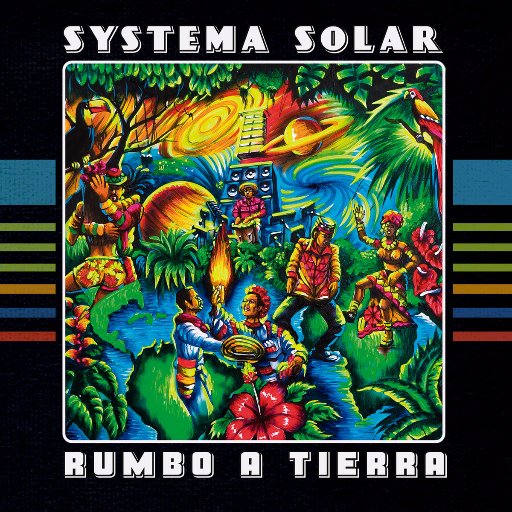Audio-visual collective Systema Solar has been energizing audiences in Colombia and worldwide since it formed in 2006 to perform at the Medellín Biennal, a show that thrust it before of an audience of 4,000 with barely a month to prepare. Ten years later, the band maintains this emphasis on spontaneity and improvisation, approaching music-making through collaboration and the intersection of the diverse backgrounds of its members.
Rumbo A Tierra, the second album that Systema Solar has released to the U.S. market, sees the band navigating its own realm of electronic music in which traditional Colombian coastal styles such as champeta, bullerengue and cumbia are all just as present as hip-hop, rock, techno and house. The record is full of dance floor-ready energy, with heavy kick drums, psychedelic guitars, and analog synthesizers meshing with traditional instruments. Songs like “Champe Tabluo” and “Rumbera” are rife with catchy vocal melodies (“Rumbera” is featured on the FIFA 2017 soundtrack), while others such as “Que Paso” or “Alo?” explore more trance-like chants which push the band’s sound towards psychedelic electronica territory. Collaborations with esteemed Colombian artists such as guitarist Abelardo Carbonó, Caribbean folk great Pedro "Ramayá" Beltran, and salsa band La 33 bring unique flavors to the group’s electronic sound.









